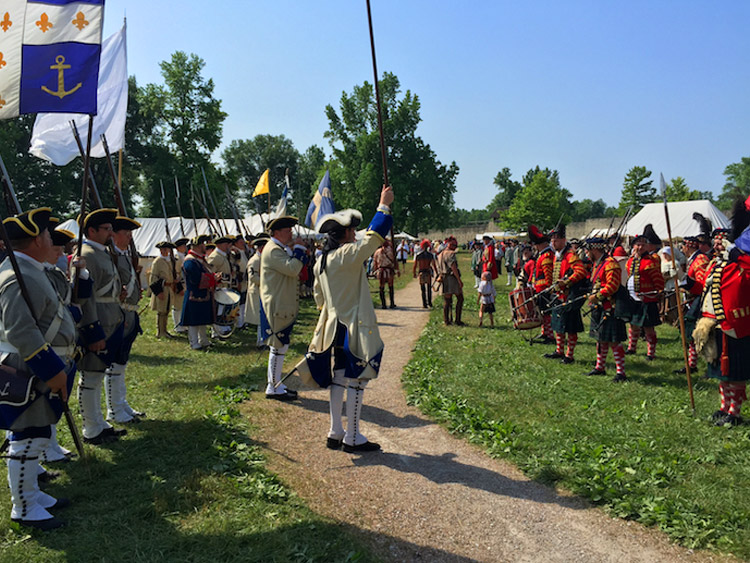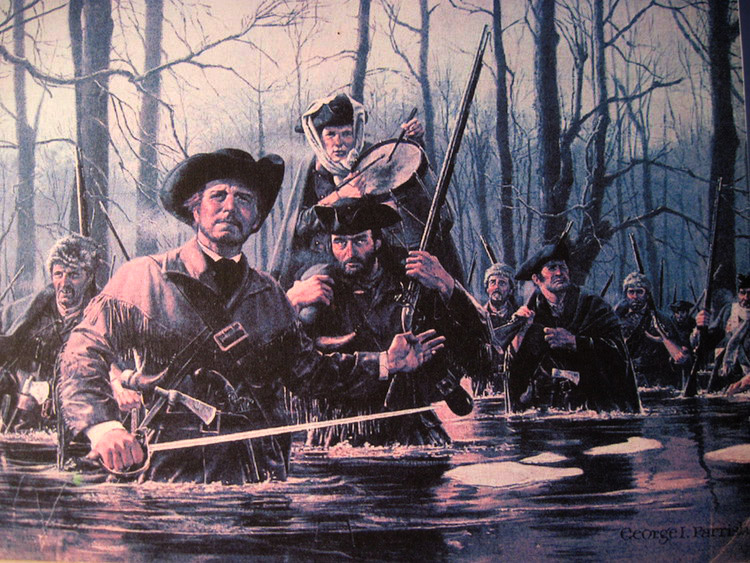Welcome to the Randolph County Center of Government in Chester, Illinois
Randolph County’s motto “Where Illinois Began” is indicative of this region’s importance to the settlement of our state. Historians sometimes begin their discussions about early Illinois with brief mention of French Jesuit missionary, Jacques Marquette and his 1673 Mississippi River expedition with French-Canadian explorer, Louis Jolliet. However, Randolph County’s history really begins around 8000 BC with evidence of prehistoric hunters who took refuge under a rock formation now called the Modoc Rock Shelter. Indian tribes were still using this limestone bluff as late as 1200 AD. Later, in 1686, Robert de LaSalle’s Lieutenant, Henri de Tonti scouted the Illinois Country for possible French trading post locations and visited the area where the Village of Kaskaskia eventually developed. The French controlled the region from the late 1600s until, after the French and Indian War, the British accepted control of “New France.” (Tour the Kaskaskia Cahokia Trail for a living history of the beginning of Illinois.)


The British ruled until the Revolutionary War when Colonel George Rogers Clark and his “Long Knives” captured Kaskaskia and Fort Gage July 4, 1778 (Prairie du Rocher and Cahokia surrendered soon after), and proclaimed the Illinois Country to be part of the Commonwealth of Virginia.
Governor Patrick Henry appointed Colonel John Todd as County Lieutenant & Civil Commandant and named Kaskaskia as the center of government. Virginia eventually ceded its frontier holdings to the Continental Congress. In 1787, the Congress established the Northwest Territory with General Arthur St. Clair as Governor. In 1790, Governor St. Clair proclaimed what is now downstate Illinois as St. Clair County with Cahokia and Kaskaskia as centers of government. On October 5, 1795, roughly the southern half of St. Clair County became Randolph County with Kaskaskia remaining as the local center of government.
Randolph County took its name from Attorney General, Edmund Randolph, a former Governor of Virginia. In 1800, the area became part of the newly-created Indiana Territory with Governor William Henry Harrison presiding at Vincennes. In 1809, the Illinois Territory was created with Governor Ninian Edwards officiating at Kaskaskia. Illinois was admitted to the Union in 1818 with Shadrach Bond as Governor and Pierre Menard as Lieutenant Governor. Governor Bond is interred and memorialized at Evergreen Cemetery in Chester. Kaskaskia served as Illinois’ first State Capitol until 1820 when the Capitol was moved to Vandalia, 90 miles up the Kaskaskia River. Kaskaskia continued as the Randolph County seat of government until the Flood of 1844 forced county seat relocation to Chester. In 1881 the Mississippi River changed course via the Kaskaskia River channel leaving Kaskaskia as an “island” on the Missouri side of the river. By 1901, the last vestiges of Illinois’ first State Capitol had collapsed into the Mississippi. The former Randolph County Courthouse was later dismantled brick by brick and rebuilt as a schoolhouse. But the Indian curse supposedly placed on “old” Kaskaskia followed the relocated village as it too was all but destroyed by more recent floods. After remarkable efforts following the epochal flood of 1993, Kaskaskia Island visitors can see a restored Liberty Bell of the West Shrine, the Church of The Immaculate Conception and the southern genesis of the Kaskaskia-Cahokia Trail. With little motor vehicle traffic, the island is also a great place for picnicking and bicycle riding.

Randolph County prior to the Flood of 1881
Randolph County is proud of the many historic sites associated with the French Colonial era, the Kaskaskia-Cahokia Trail, the Revolutionary War, early Illinois statehood, the German immigration movement, Shiloh College, Mississippi River steamboat days, the coming of the railroads, the Underground Slave Railroad/Civil War era, southern Illinois coal mining, and such historical curiosities as Chester native, Elzie Segar creating Popeye in 1929, Sparta serving as the filming location for the 1967 production of In the Heat Of the Night, and Chester’s mention in the 1993 film, The Fugitive.
Combined with numerous scenic and outdoor recreation attractions and amenities, including the World Shooting & Recreation Complex, these historic sites make a wonderful tourism destination, and provide overall quality of life and plentiful small business opportunities. Key industries in Randolph County include agribusiness, mining and quarrying, trucking and rail transportation, food processing and packaging, light and heavy metal castings, machining, conveyors and systems handling equipment, hand-finished ophthalmological surgical instruments, and rubber and plastic components.
Though much smaller in area than when created over 200 years ago, Randolph County’s population has grown from 1,225 in 1800 to more than 33,000. The county is represented by a three-member commission form of government and has 20 communities including Baldwin, Bremen, Chester, Coulterville, Ellis Grove, Eden, Evansville, Kaskaskia, Percy, Prairie du Rocher, Red Bud, Rockwood, Ruma, Schuline, Shiloh Hill, Sparta, Steeleville, Tilden, Walsh and Welge.
From Forts to Ports … Randolph County is Where Illinois Began!

